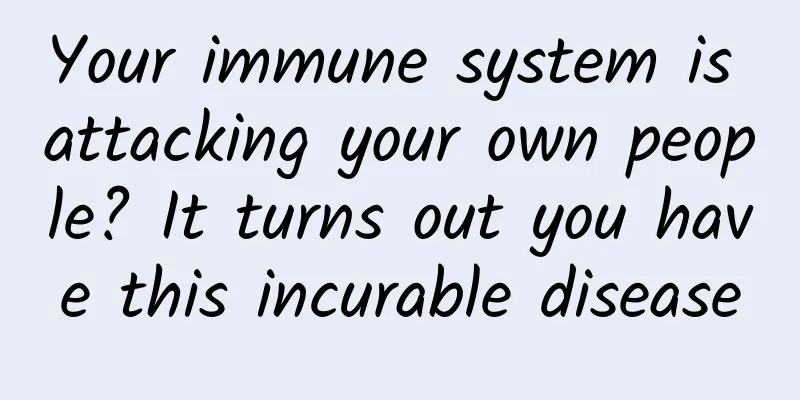Why does my breast hurt when I press it?

|
Many people feel pain when their breasts are gently pressed. This cannot be ruled out as being related to physiological factors, such as before and after menstruation, during puberty, during pregnancy, and right after giving birth. During these periods, the breasts are very sensitive, so it is normal to experience pain. If there is abnormal pain, you must seek examination and treatment in a timely manner. Breast pain types Breast disease = breast cancer? Female compatriots seem to be very sensitive to these words, especially those who suffer from breast pain from time to time. Experts point out that pain can be divided into several types. Some are physiological pains and there is no need to be too nervous, while some pathological pains should be taken seriously and medical treatment should be sought in time. Don't worry too much about physical pain Physiological breast pain is often related to menstruation, and breast tenderness about a week before menstruation is considered normal. Breast pain during adolescence: The breasts of girls aged 9 to 13 begin to develop, and dome-shaped nodules the size of peas or beans appear in the breast tissue under the nipples, which cause slight pain. After menarche, it will disappear on its own as the breasts mature during puberty. Menstrual breast tenderness: It is the most common type of breast pain, accounting for about 65% of all breast pain, with an average age of occurrence of 35 years. The pain usually occurs or worsens 3 to 7 days before menstruation and gradually disappears or eases after menstruation. The severity of the pain varies from month to month, and is often felt as a heaviness, distension, dull pain, or occasional brief tingling sensation. There are also tender breast nodules, which are aggravated by pressure, movement or lifting objects. Breast tenderness during pregnancy: Some expectant mothers experience breast tenderness around 40 days after pregnancy because the placenta and villi secrete large amounts of estrogen and progesterone, which enlarge their breasts. In severe cases, the pain may last throughout the pregnancy and usually does not require treatment. Postpartum breast tenderness: Breast fullness, hardness and pain often occur 3 to 7 days after delivery. This is mainly due to the effects of prolactin, venous filling, interstitial edema and milk filling. Therefore, mothers should breastfeed as early as possible. If there is a lump, you can apply hot compress and massage the lump before breastfeeding, or you can use a breast pump to extract milk to promote the patency of the mammary ducts. Breast tenderness after abortion: Some women feel breast tenderness and can feel a lump after abortion. This is because the pregnancy is suddenly interrupted, which causes the hormone levels in the body to drop sharply, causing the newly developed mammary glands to suddenly stop growing, resulting in breast lumps and breast pain. Breast pain after sexual intercourse: People with low libido or disharmonious sex life cannot achieve sexual satisfaction, so breast congestion and swelling are not easy to subside. Continuous congestion will cause breast pain. |
<<: Why do I have a headache during my period?
>>: How to relieve back pain during menstruation?
Recommend
New study! Even if Helicobacter pylori is eradicated, the risk of gastric cancer still exists!
Gastric cancer, as one of the malignant tumors wi...
What should I do if I get hemorrhoids during breastfeeding? New mothers can do this
Women who are breastfeeding are also prone to hem...
What is the green mass inside the oyster? Can it be eaten? How many minutes should oysters be pressure cooked in a pressure cooker?
Oysters are rich in nutrients, high in protein an...
Daily behaviors that focus on children's hearing
01 Pay attention to children's hearing health...
What kind of woman is the most attractive?
Every woman hopes to be charming. This charm shou...
Calf pain 6 months pregnant
A pregnant woman is six months pregnant and is in...
Why do I always want to drink water during confinement?
In order to expel excess water from the body as q...
What to do if you have a posterior pelvic tilt
In fact, many people are very concerned about the...
How much does cervical cancer screening cost?
Cervical cancer is a very scary disease for women...
Will I have a boy if I get pregnant during ovulation? Is the probability high?
The ovulation period is what people often call th...
What is the fat content of chicken? What seasonings should be added to stewed chicken?
Chicken has the lowest fat content among all meat...
Girls have pain in their belly button
Among all physical diseases, gastrointestinal dis...
Dermatomyositis: Uncovering the mysterious dialogue between skin and muscle
Dermatomyositis, a seemingly strange and mysterio...
Take gynecological Qianjin tablets for cervicitis
Fuke Qianjin Tablets is a gynecological medicine,...









